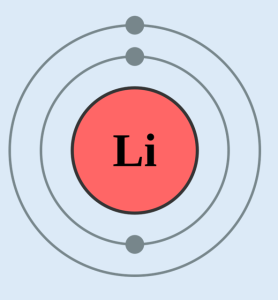
Recent Advances in Batteries: Revolutionizing Energy Storage
The pursuit of more efficient, safe, and long-lasting batteries continues to drive breakthroughs in materials science and engineering. Recent research has showcased innovative approaches ranging from strain engineering in lithium-sulfur batteries to the design of non-flammable solid-state polymer electrolytes. This article explores some of the most promising advances that are redefining the landscape of battery technology.
Breakthroughs in Lithium-Sulfur Battery Performance
Lithium-sulfur (Li-S) batteries are attracting attention due to their high theoretical energy density. However, challenges related to sulfur redox kinetics have limited their practical application. A recent study demonstrated how high-dimensional strain engineering can unlock fast polysulfide redox reactions. By applying biaxial strain to a dichalcogenide catalyst, the researchers enhanced the exposure of active Mo sites, shifted the sulfur adsorption mechanism, and significantly improved charge transfer. The result is a Li-S battery with enhanced capacity retention and rate performance, as evidenced by a multilayer pouch cell achieving 6 Ah-level performance Yang et al., 2025.
Innovations in Solid-State Polymer Electrolytes
Safety and high-voltage tolerance are paramount for next-generation lithium metal batteries. Recent advances in solid-state polymer electrolytes have shown great promise in addressing these issues. By adopting a “puzzle-like” molecular assembly strategy through in situ polymerization, scientists have created electrolytes that are not only non-flammable but also exhibit high ionic conductivity, a high lithium transference number, and an oxidation voltage exceeding 5 V. This breakthrough paves the way for lithium metal batteries that offer both safety and high specific energy, with demonstrated performance in pouch cell configurations Chen et al., 2025.
Enhancing Ion Transport in High-Mass-Loading Cathodes
For lithium-ion batteries to meet the increasing demands of electric vehicles and grid storage, ensuring efficient ion transport in high-mass-loading cathodes is critical. Researchers have innovated by using operando neutron imaging to guide gradient designs in Li-ion solid conductors. This method visualizes lithiation processes across the cathode thickness and helps engineers create a gradient in catholyte concentration that matches lithium flux distribution. The result is improved rate performance, even in high-mass-loading cathodes, essential for transitioning from laboratory prototypes to commercial applications Ji et al., 2025.
Advancements in Lithium-Oxygen and Beyond
Another exciting development comes from the realm of lithium-oxygen (Li-O) batteries. Enhancing the electrochemical oxygen reactions and improving catalytic performance are key to unlocking the full potential of Li-O batteries. Researchers have developed a free-standing, flexible cathode using an MXene-supported Ni-Co bimetallic MOF membrane. This innovative design not only boosts oxygen reduction reactions but also facilitates smoother ion transport, resulting in ultra-high capacity and excellent cycling stability Liu et al., 2025.
Future Outlook
The current wave of research highlights the role of interdisciplinary approaches—integrating materials science, catalysis, and advanced imaging techniques—in battery innovation. These breakthrough studies are paving the way for safer, faster, and more energy-dense batteries that can power the next generation of portable electronics, electric vehicles, and large-scale energy storage systems.
Key Takeaways:
- Strain Engineering enhances the performance of lithium-sulfur batteries by improving active site exposure and redox kinetics.
- Solid-State Electrolytes: Improve safety and voltage tolerance in lithium metal batteries through innovative molecular designs.
- Gradient Design in Cathodes: Optimizes lithium-ion transport in high-mass-loading cathodes, crucial for high-energy applications.
- Advanced Cathode Materials: MXene-supported bimetallic membranes are setting new performance records in lithium-oxygen batteries.
As the battery research community continues to address longstanding challenges with novel solutions, we are moving closer to a future where more efficient and reliable energy storage becomes a reality.
Sources:
- Yang, J.L., et al. “High-dimensional strain unlocks fast polysulfide redox kinetics for lithium-sulfur batteries.” Nature Communications, 2025. https://doi.org/10.1038/s41467-025-63969-z
- Chen, J., et al. “Puzzle-like molecular assembly of non-flammable solid-state polymer electrolytes for safe and high-voltage lithium metal batteries.” Nature Communications, 2025. https://doi.org/10.1038/s41467-025-63439-6
- Ji, T., et al. “Operando neutron imaging-guided gradient design of Li-ion solid conductor for high-mass-loading cathodes.” Nature Communications, 2025. https://www.nature.com/articles/s41467-025-62518-y.pdf
- Liu, L., et al. “MXene-supported Ni-Co bimetallic MOF 2D lamellar membrane for enhanced electrochemical oxygen reactions and Li-O battery.” Scientific Reports, 2025. https://doi.org/10.1038/s41598-025-98982-1
By staying informed about these developments, industry professionals, researchers, and enthusiasts alike can better anticipate the next era in battery technology—one that promises to deliver superior performance and greater safety in energy storage solutions.



